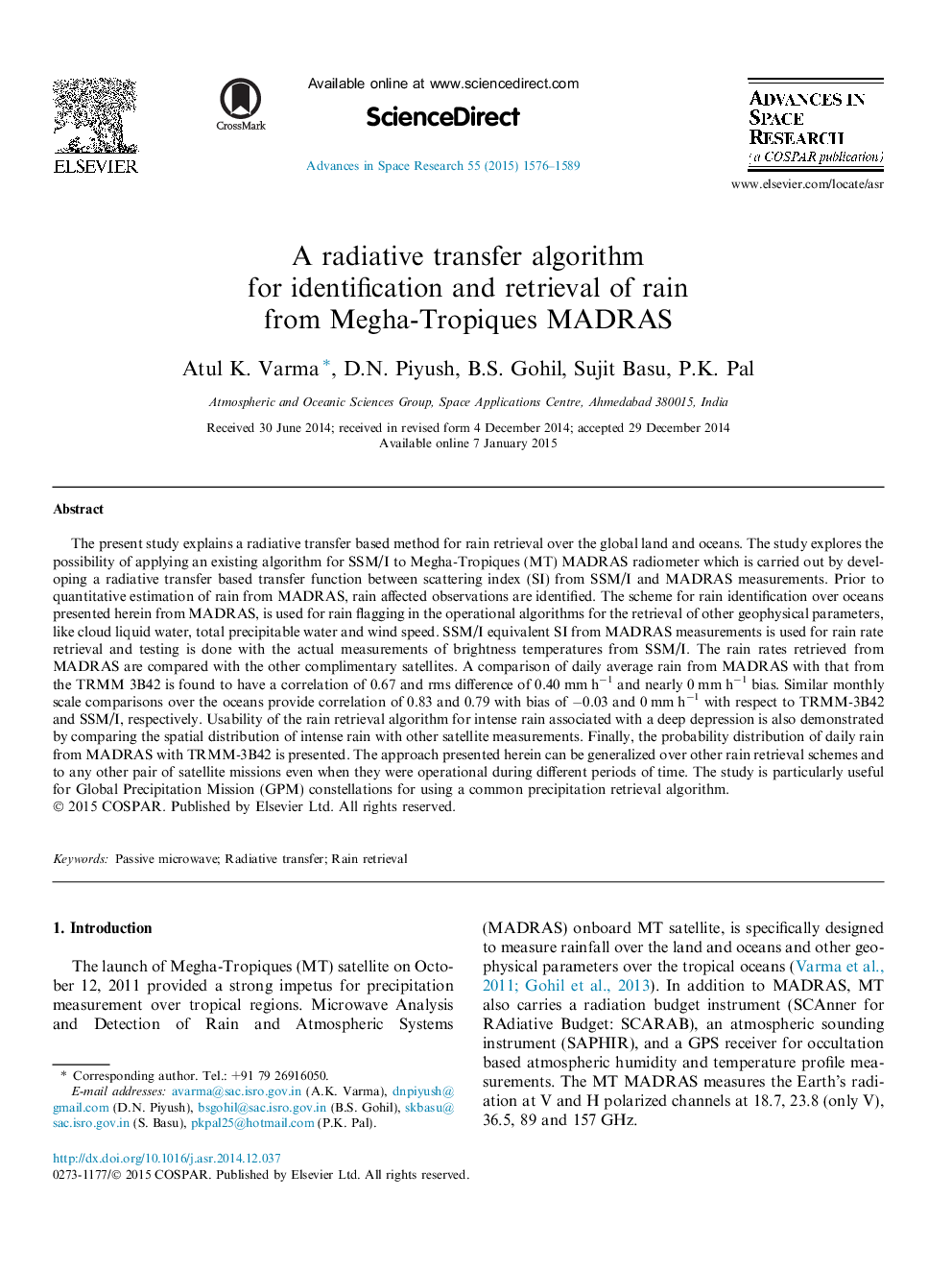| Article ID | Journal | Published Year | Pages | File Type |
|---|---|---|---|---|
| 10694173 | Advances in Space Research | 2015 | 14 Pages |
Abstract
The present study explains a radiative transfer based method for rain retrieval over the global land and oceans. The study explores the possibility of applying an existing algorithm for SSM/I to Megha-Tropiques (MT) MADRAS radiometer which is carried out by developing a radiative transfer based transfer function between scattering index (SI) from SSM/I and MADRAS measurements. Prior to quantitative estimation of rain from MADRAS, rain affected observations are identified. The scheme for rain identification over oceans presented herein from MADRAS, is used for rain flagging in the operational algorithms for the retrieval of other geophysical parameters, like cloud liquid water, total precipitable water and wind speed. SSM/I equivalent SI from MADRAS measurements is used for rain rate retrieval and testing is done with the actual measurements of brightness temperatures from SSM/I. The rain rates retrieved from MADRAS are compared with the other complimentary satellites. A comparison of daily average rain from MADRAS with that from the TRMM 3B42 is found to have a correlation of 0.67 and rms difference of 0.40 mm hâ1 and nearly 0 mm hâ1 bias. Similar monthly scale comparisons over the oceans provide correlation of 0.83 and 0.79 with bias of â0.03 and 0 mm hâ1 with respect to TRMM-3B42 and SSM/I, respectively. Usability of the rain retrieval algorithm for intense rain associated with a deep depression is also demonstrated by comparing the spatial distribution of intense rain with other satellite measurements. Finally, the probability distribution of daily rain from MADRAS with TRMM-3B42 is presented. The approach presented herein can be generalized over other rain retrieval schemes and to any other pair of satellite missions even when they were operational during different periods of time. The study is particularly useful for Global Precipitation Mission (GPM) constellations for using a common precipitation retrieval algorithm.
Keywords
Related Topics
Physical Sciences and Engineering
Earth and Planetary Sciences
Space and Planetary Science
Authors
Atul K. Varma, D.N. Piyush, B.S. Gohil, Sujit Basu, P.K. Pal,
